David F. Sandberg‘s Shazam! Fury of the Gods may not have been able to replicate the box office success of the first film, but there’s no denying that the film’s visual effects were impressive, as the director didn’t have the same budget as other big superhero movies, so he really had to push his crafts teams to the limit on the DC sequel.
In this follow-up to the 2018 hit, the title superhero (sort of) is once again played by Zachary Levi, who, along with his “Shazamily,” must face the Daughters of Atlas, as played by Dame Helen Mirren, Lucy Liu, and West Side Story breakout Rachel Zegler. These goddesses have a very specific plan to use the staff of the wizard Shazam (Djimon Hounsou) to revive the “Tree of Life” in the center of Shazam’s hometown of Philadelphia. It all leads to a climactic third act in which the Tree of Life is corrupted by dark magic and releases all sorts of mythological beasts across the city.
VFX Supervisor Thrain Shadbolt was in charge of Wētā FX’s work on that final act, which involved creating the vines that creep out of the Tree of Life through the streets of Philly, and the pods that release menacing mythological creatures such as a Cyclops, a Minotaur, a Manticore, Harpies, and more.
Below the Line spoke with Shadbolt shortly after the theatrical release of the film this past March. (Note: There are spoilers in this article about the ending of Shazam! Fury of the Gods. Also, larger versions of the images can be viewed by clicking on each.)
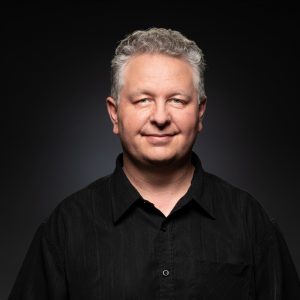
Below the Line: I know you’ve been at Wētā since the first Avatar. Did you come over from a different VFX house?
Thrain Shadbolt: I’m actually a Kiwi, I grew up in Auckland, but back when I was starting out, Wētā wasn’t here, and it was a much smaller industry in the mid-’90s. I actually went over to London for a while and spent about 12 years working over there, ultimately working for Cinesite London before getting into film there [and then] making the move back to New Zealand just before Avatar, 15-plus years ago, now. I’ve been with Wētā ever since.
BTL: Are you generally an overall VFX Supervisor, or have you changed which department you’re overseeing during your time at Wētā? Are you a generalist, as they say?
Shadbolt: I suppose my background was probably a generalist, going way back. I started my career in commercials, actually, [where] you have a small crew and just dive in there and do everything. As I transitioned into film, I got more into lighting and the look-dev side of things, and then I was CG Supervisor for a while, and more recently, a VFX Supervisor. As you sort of do more supervision, you end up [in] more of a hands-on role a lot of the time. What’s nice about the occasional small show is, I still get to jump in there and light quite a few shots, but those opportunities do get rarer as the show gets bigger and more complicated.
BTL: What’s the difference between a CG Supervisor and a VFX Supervisor? Does the latter oversee everything compared to just one department?
Shadbolt: A CG Supervisor really will be looking after the lighting, the TDs [i.e. Technical Directors — a term used for artists with a technical background] on the team. It’s really looking after the part of the pipeline that delivers finished renders into compositing, and then the composite is taken over from there. The VFX Supervisor, of course, has responsibility for the whole show and responsibility for liaising with the client, and so on.
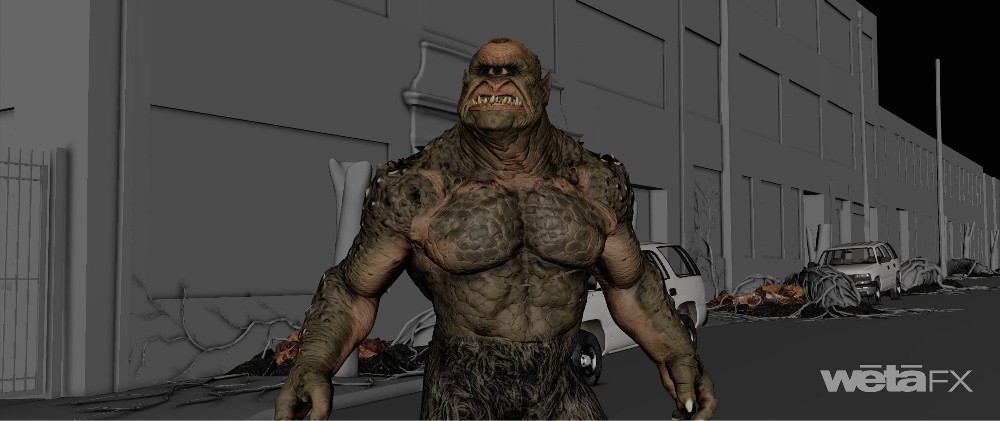
BTL: At what point do you get involved? I’m not even sure about the timeframe for this movie, because COVID threw off many schedules and this got delayed. When did you start on it in relation to shooting?
Shadbolt: I’ll have to check my notes because we actually finished on it about six, seven months ago, now. Going back, we actually started towards the end of 2021. I became involved roundabout October 2021. A few people had already started working with the filmmakers before we put the whole team together. We had an Animation Supervisor and an Asset Supervisor just starting to put stuff together. Then, I got involved, and we started moving the project forward through pre-production.
There was a fair bit of time upfront, just working with [the] client, building the creatures that we were doing. They provided some pretty cool concept art that our team here worked up a bit more, and then started turning that into full 3D concepts, and then progressed further into full asset build. For a relatively small number of shots for us, it was quite an asset-heavy build. We had to build four pretty detailed creatures and put those into the shots. There was a lot of work involved in getting those creatures up to a convincing level, given the number of shots we had to do.
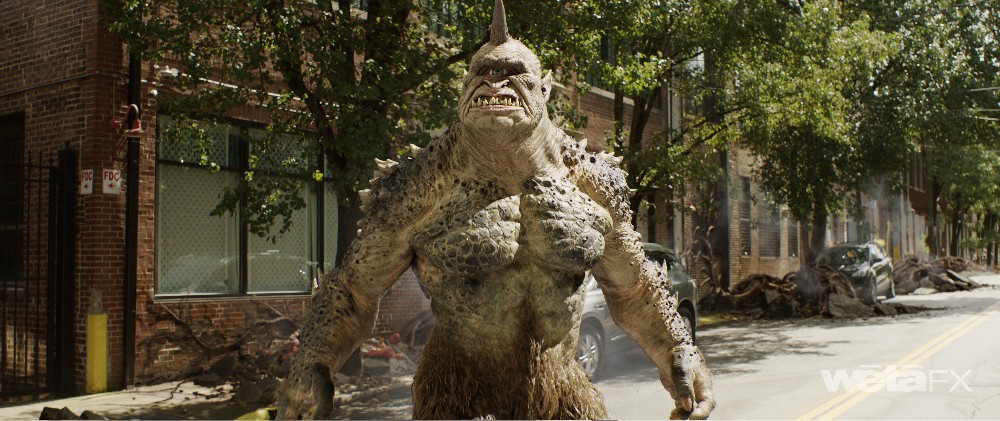
BTL: Were you involved with turning Atlanta into Philadelphia as well?
Shadbolt: They shot in Atlanta, but in some of the shots, we did some matte painting work, basically, to turn parts of the city skyline into something a little bit more like Philadelphia. That was part of our body of work, and then, of course, beyond that, there was also quite a bit of dressing in these roots and pods, which are from the corrupt Tree of Life. That was a big element, actually. In fact, there was quite a bit of work in that. The plates were pretty bare, really; they had dressed some duct piping on set to show where the roots might go, but it was very minimal.
It was actually a huge amount of work being able to dress each of the shots with roots and pods, integrating them into the environment, [and] integrating damage from those roots on the buildings into the environment as well. That’s where the matte painting team also came in and helped us as well, going in there and adding roots to a building that would then come in and fracture parts of it and add cracks and damage and weathering and that kind of thing to the plate. A lot of work on each plate, as well as making it more like Philadelphia sometimes.
BTL: When I spoke with David, he mentioned they couldn’t shoot in an actual baseball stadium in Atlanta. Did they just build part of the stadium and then you could finish it with visual effects?
Shadbolt: The baseball stadium was done elsewhere, so we weren’t involved with that particular bit. There are obviously a lot of limitations on where you can shoot, of course. It wouldn’t surprise me that they probably had to go the full CG route on that.
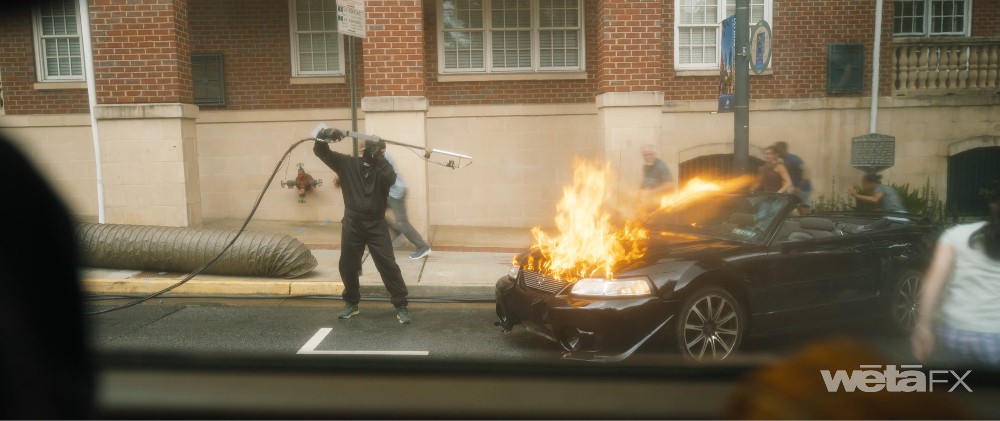
BTL: But some of your work would interact with that stuff, too — don’t the vines go into the stadium?
Shadbolt: I believe that the initial starting point [for] the Tree of Life and the initial shots where the roots were growing across the city, was handled by DNEG. We did a lot of shots with the roots in [them], but they were already there at that point and giving birth to the monsters. Our shots are generally involved around monster mayhem, with all these little mythological creatures running around the city, causing lots of damage and birthing out of the pods — the corrupted fruit of the Tree of Life, which gives birth to the Minotaur, the Manticore, Cyclops, and the harpies.
BTL: Since you were involved fairly early on, how was it decided by David or the overall VFX Supe what Wētā would do? I was convinced that Wētā did the dragon, but that wasn’t the case.
Shadbolt: To be fair, that’s often decided on the production side, by the production team and the Visual Effects Supervisor working with the Director [on] exactly how they’re going to parcel it out. Of course, DNEG was another vendor on the show, and they handled quite a bit of work — the dragon and so on. We did work relatively closely with them. Raymond Chen, their Supervisor, was working alongside [overall VFX Production Supervisor] Bruce Jones. We shared assets. They built the unicorns. We brought the unicorns in and used them in a bunch of shots with the kids riding unicorns. We did those shots, which were quite a challenge in their own right. We worked closely with them at times, but the decision as to who’s doing what is really kind of coming down more from the client. If we think it worked for us, we’ll take those shots on.
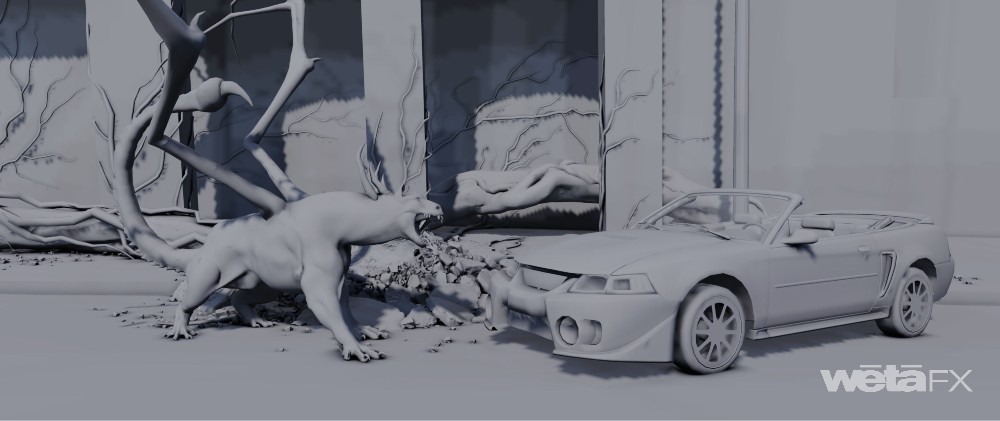
BTL: You said that DNeg actually designed the unicorns, but Wētā animated them and brought them into shots?
Shadbolt: That was an asset we inherited from them. They used it in a few shots, but then for whatever reason — maybe they didn’t want to do those sequences or they had too much on their plate — we ended up taking over the unicorn charge. They were going to do the shots originally, but we did them. We brought their asset in and matched what they were rendering and then did the work to integrate the kids onto the backs of the unicorns for the charge.
BTL: David comes from a horror background, so was he trying to do any of this practically, or did he just know right away that there was no way to really pull that off, even if it was just putting kids on regular horses?
Shadbolt: I don’t know the full genesis of that story at the end of the day… you probably would have talked it out with Bruce, but they built these very complex riding rigs for the kids. That was part of their plan from the get-go — to shoot them on these moving rigs that simulate a rough horse motion against [a] blue screen. We then would take those blue screen elements, track them, track the motion of that, and then work that back onto the motion of our CG unicorns.
[It’s] actually kind of challenging, because when you shoot them on the rigs, at that point, you’re almost locked into the motion of the kids moving up and down at a certain frequency. Once we got them into the shop, we had the animators work on the unicorns and make them charge nicely, while we found that [the kids were] moving up and down at a slightly different frequency. The animation team had to try and make those two things meet, and at times, actually had to reanimate the plates of the kids, cut them out of the cards, and move them with the horses, sometimes having to counter-animate what had actually been captured by the camera [in order] to make it work.
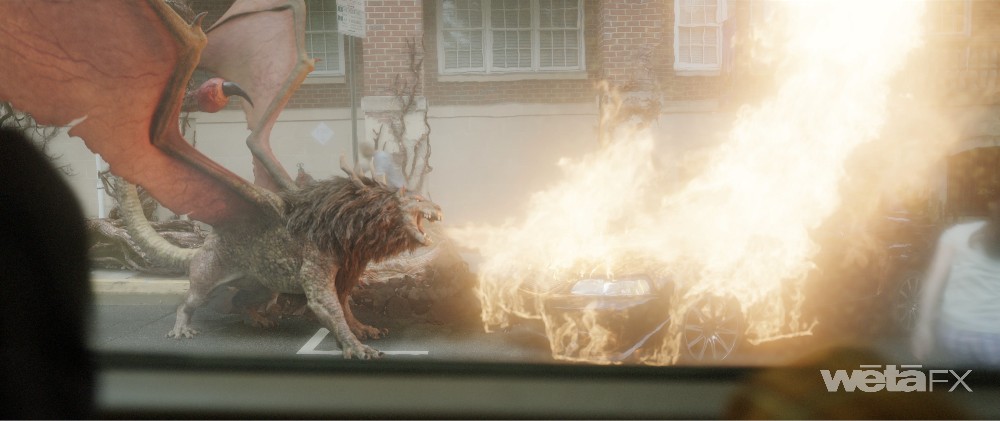
BTL: Let’s talk about the creatures. I know that with his horror background, David is always trying to push how scary he can make things, so how does Wētā work on the creatures to make sure they’re scary but not so scary that they’ll traumatize any kids?
Shadbolt: It was definitely a fun one. I really enjoyed the fact they were based loosely on Greek mythology, as that was something that always interested me when I was a kid. There was a starting point with some concept art that the art department had worked up. We took that as a starting point, did a few revisions on those to address a few more notes David had, and then we started turning them into proper 3D assets. There was a little bit of development along the way.
Of course, we also had to create different variants of them as well. We’d start with one initial design, then try some different kinds of colors and skin textures, and with the Harpy, we’d have different color schemes for the feathers and different layouts for the feathers to make it look like there was more than a single one of them.
A lot of what gives the creatures their character, of course, is the performance and so Mark Smith, the Animation Supervisor, and his team spent quite a long time from pretty early on working with Bruce and the director, just to figure out what those performance beats would be. I think animation plays a big role in this stuff quite early on, almost like a pre-vis team at times, just coming up with interesting ideas for beats in the shots, for comic things, or scary things for the creatures to do.
It wasn’t like, ‘Here’s a template, go and do this.’ It was quite collaborative, in that sense — a lot of bouncing back and forth with ideas as to what they end up doing, and then, the usual process in terms of defining the look and how scary and creepy they are, or how bloody things would get. It’s a kid’s film at the end of the day, but a lot of the things are played for comedy more than horror, to be fair, so we never went too scary or too dark.
BTL: Do you have go-to animators over there who are especially good with these types of creatures? I know Avatar was happening around the same time, so it must be hard to get Wētā animators away from that since I’m sure that’s using a lot of the best people.
Shadbolt: Of course, Avatar is like a giant black hole with a pull of gravity, but I will generally be dealing more directly with the animation supervisor, and he has his team key people on that. Some of the creatures used a bit of mocap as well. [For] the bipedal creatures, we did use some mocap as a starting point for that.
[For] the Cyclops and the Minotaur, [we] were definitely able to use a bit of mocap on them at times. Of course, you need to then tweak that to give them the weight these creatures have. [The] Harpy flying creature, that had to be more keyframe based. And then, of course, the Manticore, which is this weird hybrid creature. It’s bipedal and [has] wings, and it’s got a tail like a scorpion. That was definitely a keyframe situation there, but a lot of fun for the animators as well. I think it was just a fun show for animation because it was crazy monsters doing crazy monster mayhem things.
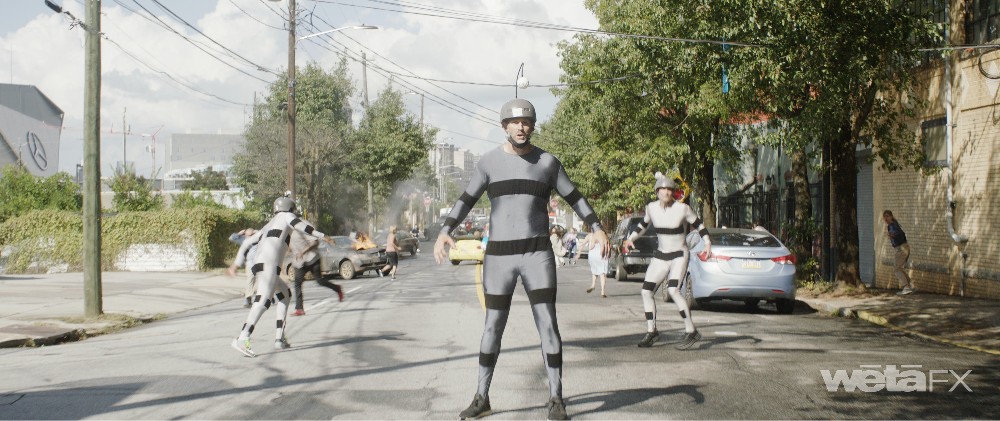
BTL: When I saw the Manticore for the first time, the 10-year-old in me flipped out. I’ve seen paintings and comics and stuff, but never alive on the screen.
Shadbolt: That was a particularly interesting design, really, because it has the mane and somewhat the shape of a lion, but then the mouth is more like a crocodile. It’s kind of scaly and it’s got wings like a dragon, and, of course, the scorpion’s tail and a brief flight. There’s a whole other effects component to that thing as well, probably the single most challenging creature, really. That being said, I do have a soft spot for the Cyclops, just because it was a bit of a call back to the old Ray Harryhausen films, so I thought was pretty cool.
BTL: You mentioned you did some mocap, so did they have some really large stuntmen on set to portray those creatures for the animators to work from?
Shadbolt: They did have a stuntman on set with them, the typical sort of marked suit, but it wasn’t an on-set capture, that was more for reference. The mocap we ended up using was typically done here on the stage. Mark and his team would go down there and do a bit of capture when needed.
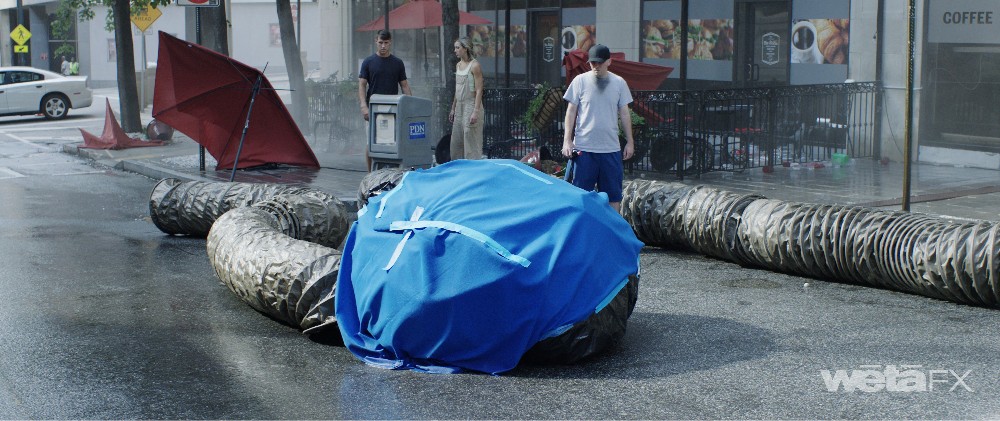
BTL: Was there anything on set for the pods and vines or was that all done on your end?
Shadbolt: We pretty much had to put most of that in. Occasionally, there would be a beanbag where a pod was gonna go and some ducting which we’d replace with roots, but that was just reference on set where to jump over, where not to walk, and so on. It was generally a pretty crude starting point. There’d be something for people’s eyelines and so on, but no practical effects as such.
Of course, the pods were technically the hardest thing we had to do on the show. There was a lot of associated effects work around that. They had to have a very goopy, organic quality to them. You had, like, an outer shell, and then there was an inner shell that was more like a sack that was filled with amniotic fluid. So you had two layers of membrane, fluid inside one, another fluid in between the two, and then there’d be debris and dirt over the top of that.
That was all driven by the performance of the creatures, so with [the help of] animation to give us something there to work with, which would then end up driving these Houdini simulations over the top of that. And so, each layer then drove the next layer, and so on. Changes to animation, at that point, would have a ripple effect, but that’s how we had to build it up. Each layer had its different quality.
The interior membrane was more stretchy and restricted and that would eventually snap; the outer membrane was tougher, more leathery, and would tear and fracture. On top of all that, we had dirt and debris sitting on top of it from when these pods had been under the ground and pushed up through the ground as the Tree of Life grew across the landscape.
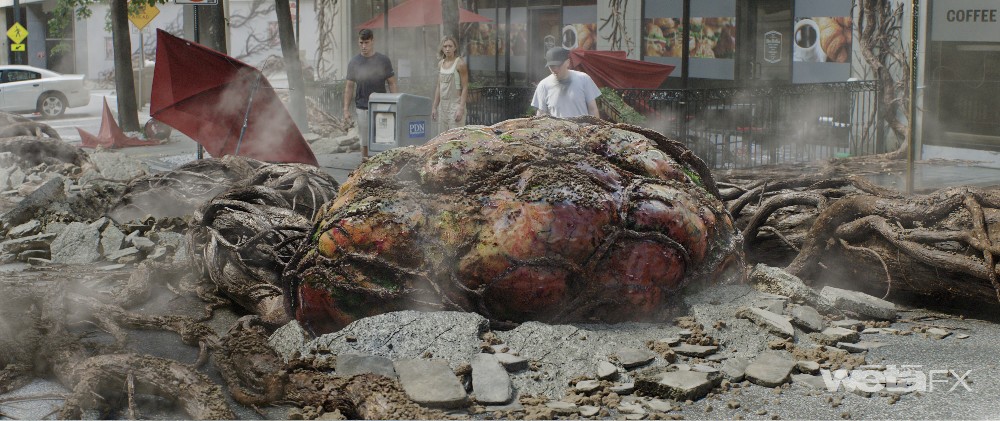
BTL: I know Wētā’s animators and artists do a lot of research, but what do they use for the pods? Do they have big garbage bags full of goo to reference?
Shadbolt: It’s quite far removed from any one particular sort of reference. We didn’t do practical research in that sense, but along with the filmmakers coming to us with a certain set of references, we did do a reference search of things we can look at, and stuff we did look at was some gross anatomical stuff with birthing references.
BTL: I was actually going there, wondering whether they had to watch videos of cows or sheep giving birth.
Shadbolt: Exactly. We did look at things like that as a little bit of a reference without referencing anything too directly — because as I say, it is a weird fantasy thing… Is it a fruit? Is it an egg? It’s somewhere between those things and not quite one or the other. We didn’t want it to be like cracking a hard eggshell. It needed to become more leathery on the outside, so it does bend and then tear, as opposed to shattering in a rigid way. And then, the interior of it was very much influenced more by the placenta.
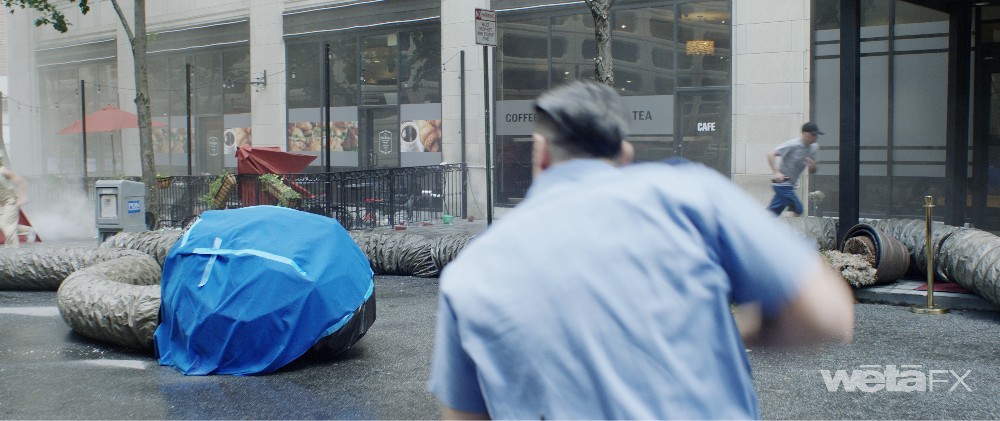
BTL: Was Wētā also involved when all the creatures burst into leaves?
Shadbolt: That was one of our shots. In fact, that was probably our single most complex shot. There are two shots with the leaves, where we finish in a close-up where the cameras are tracking through the crowd of creatures in the square, and they are each gradually disintegrating back into leaves as the evil magic is switched off. They’ve been corralled by the kids on the unicorns. [The] performances had to be figured out by animation, first of all, and then that had to be handed off to the effects team to do this graduated disintegration into leaves — finding the right feel for that, working back and forth with the director on what he was looking for there. [Like], “How much to collapse? How much to explode?” Finding the happy medium for that.
As we track all the through shots, all the creatures dissolve, and we see the kids on the back of the unicorns at the end of the shot as well. Of course, these were the kids shot on these rigs on set, so there are no unicorns, but they were sitting on the rigs, and then they fall off the rigs onto a pile of crash mats. We had to take all that out, put them on the unicorns, have the unicorns dissolve into leaves, then have the live-action children fall onto that pile of leaves as well. As you can imagine, that was pretty complex, and we had to track them. We had to put the digi-doubles for them to impact into the pile of leaves. That was probably the single most complex shot we did.
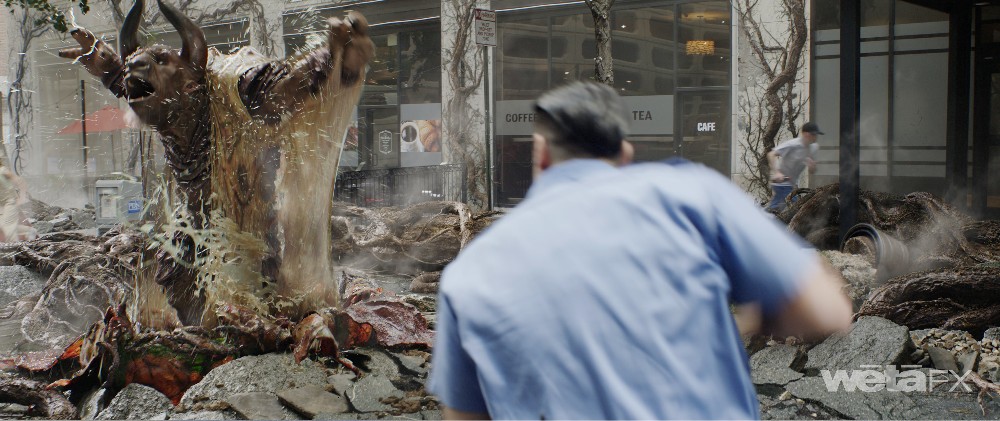
BTL: Digi-doubles are fairly common nowadays, especially because you can’t have kids do some of these things for real, so are there people on set who can get what you need in terms of the facial scanning for it to be brought into the visual effects shots? Can you work from what they’ve shot or do you have to go there to scan everyone?
Shadbolt: They had done a scan of all the actors on set. DNEG put the digi-doubles [of] all the kids together. We took their assets and matched their look, and put them onto the backs of the unicorns and shots where we needed to, typically in the wide shots. Close-ups or anything where they had shot the kids against [a] blue screen on the rigs, we tended to use the plates for those, but [for] wider shots, we would use the digi-doubles for that purpose. They’re good quality digi-doubles. We certainly had no issues there and were able to flip between them as necessary.
BTL: Your team did a great job. David has always used visual effects in his movies, but I think this one has the most VFX that he’s ever had in his movies.
Shadbolt: Like I was saying, it was quite collaborative, and Bruce brought us into the reviews with David, so we were able to work directly with the director, at times, which doesn’t always happen. Sometimes, we’re one removed, and he was certainly fun to work with and quite a good sport. They did a cameo of him in the film — you may have seen that.
BTL: No, I’ve never met David in person — only talked to him on the phone — so I have no idea what he looks like.
Shadbolt: I haven’t met him in person, of course, because we did the review online, but there’s a shot in the film where there’s a guy running through a park and he gets picked up by the Harpy, and it flies up into the air. That’s him. We actually had to make a digi-double of him. They did a scan and sent the material over to us. We put him into the system and worked up a look there to match what he looked like in the plate. As he runs in, we do a takeover, as he gets picked up, we turn to the digi-double, and the Harpy flies off and then drops him from a great height. [chuckles] He was a good sport to let us do that.
Shazam! Fury of the Gods is now available to buy or rent on all major VOD/digital platforms, and it will begin streaming on HBO Max on May 23. You can also read our interview with Director David F. Sandberg over at Above the Line.





